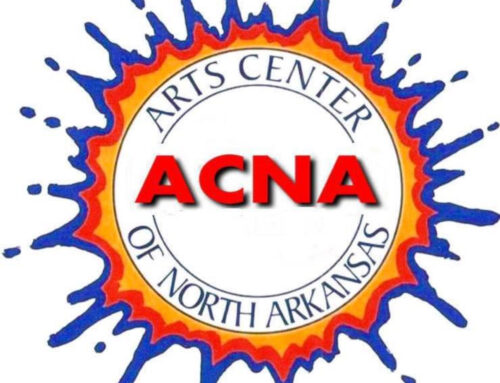In the upcoming series of articles, we will explore the multifaceted responsibilities of the Board of Directors within nonprofit organizations. Our previous article examined the pivotal aspect of maintaining continuity within the board. This week, we focus on the board’s governance and policymaking. At the forefront of the board’s governance responsibilities is the task of formulating the nonprofit’s mission, vision, and overarching strategic direction. This fundamental endeavor establishes the policies that govern the organization’s operations, ensuring a seamless alignment with its core mission.
However, where does a board begin in developing the policy and guidelines that govern the organization? Let us consider a hypothetical nonprofit organization focused on providing educational support to underprivileged communities using a systems approach. In this hypothetical scenario, the board adopts a systems approach to policymaking for effective program delivery. The board will consider a holistic program design rather than creating isolated policies for curriculum development, teacher training, and student engagement. They will design policies considering how these elements interact and impact each other.
Additionally, the board may contemplate how interdisciplinary collaboration involves educators, social workers, community members, and education experts in policy discussions, whereby the collaborative partners ensure that policies are well-rounded and informed by diverse perspectives. Other elements in a systems approach might include feedback loops, alignment with the mission, adaptability, long-term focus, risk management, and transparency and communication. By adopting a systems approach to policymaking, this nonprofit organization ensures its policies are interconnected, adaptable, and effective in achieving its overarching mission of providing quality education to underprivileged communities.
Using a systems approach model, the board would operationalize the organization’s mission at the micro, mezzo, and macro levels internally and externally.
EXTERNALLY: Beginning with an external systems approach, the Micro–Level refers to the smallest and most immediate interactions and relationships. It focuses on individuals and their direct interactions with their immediate environments. In social work (e.g., program outreach), this involves collaborating directly with individuals to address personal challenges, provide support, and create positive changes in lives. Micro-level interventions aim to improve the well-being of individuals on a one-on-one basis.
At the Mezzo or Intermediary Levels, policymaking focuses on groups and stakeholders outside the organization. It deals with interactions that are larger than individual relationships but smaller than societal structures. Mezzo–level work often involves working with families, small groups, and community organizations. For instance, in social work, mezzo-level interventions might include family therapy, support groups, or collaborating with local community centers to address specific issues affecting a group of people.
At the Macro–Level, the broadest level focused on larger societal systems and structures, the board might consider the bigger picture and how societal, economic, and political factors impact individuals and groups. In social work, macro-level interventions might involve advocating for policy changes, researching social issues, or addressing systemic inequalities. Macro-level work aims to create lasting and widespread change by influencing the broader systems that shape people’s lives.
INTERNALLY: Just as the board considers policies for external stakeholders, it also considers policies for internal stakeholders, staff, and volunteers. Here is a snapshot of policies at each level:
Micro-Level policies are specific to the nonprofit organization’s individual departments, units, or teams. They address operational details and procedures that directly affect day-to-day activities. For instance, a policy on office equipment usage might define the rules for using office equipment such as computers, printers, and phones. Or there may be a time-off request policy that details the process for requesting and approving time off for staff members. Or an expense reimbursement policy that establishes procedures for submitting and reimbursing expenses incurred by staff or volunteers during official duties.
Mezzo-Level policies span across departments or units designed to ensure coordination, collaboration, and consistency across different areas of the organization. A communication and collaboration policy might outline the expectations for communication tools, platforms, and practices to ensure effective information sharing and collaboration. Another example might be a performance evaluation policy that defines the organization’s approach to evaluating staff and volunteer performance, whereby detailed are the criteria, processes, and timelines for conducting performance reviews; or the board may formulate a policy for staff training and professional development.
Macro-Level policies broadly impact the entire organization and often address overarching principles, strategic direction, and governance. Policies like diversity, equity, and inclusion, strategic planning, or board governance outlining the roles, responsibilities, and expectations of the board of directors represent macro-level policies. The policies a Board of Directors might set can vary based on the organization’s mission, goals, and legal requirements. However, here are ten standard policies that nonprofit boards may consider:
1. Code of Ethics and Conduct: Establishes standards of behavior and ethical principles for board members, staff, volunteers, and other stakeholders.
2. Conflict of Interest: Outlines procedures for identifying, disclosing, and managing conflicts of interest that might arise.
3. Financial Management: Sets guidelines for financial planning, budgeting, accounting, and reporting, ensuring proper fiscal responsibility and transparency.
4. Fundraising and Development: Provides guidelines for fundraising efforts, including donor relations, gift acceptance policies, and grant-seeking processes.
5. Whistleblower Protection: Outlines mechanisms for reporting unethical behavior, fraud, or misconduct while safeguarding individuals who come forward.
6. Governance and Board Structure: Defines the structure of the board, roles and responsibilities of board members, and the process for board recruitment and evaluation.
7. Strategic Planning: Guides the process for creating and implementing the organization’s strategic plan, outlining its long-term vision, goals, and strategies.
8. Risk Management: Identifies potential risks to the organization and establishes risk assessment, mitigation, and crisis management protocols.
9. Human Resources: Addresses hiring, performance evaluation, compensation, benefits, and personnel policies for staff and volunteers.
10. Technology and Data Security: Outlines protocols for managing and protecting sensitive information, cybersecurity measures, and data privacy compliance.
Remember that these policies vary significantly based on the organization’s mission, size, industry, and specific goals. The alignment of policies across different levels helps ensure consistency, clarity, and effectual functioning within the nonprofit organization because community matters.
In community,
Dr. Pat
Patricia A. Clary is a consultant who champions the advancement of strategic community impact agendas to addressintricate societal challenges through collaborative efforts, convening leadership, and effective governance.
You can contact her through the following channels:
– LinkedIn: https://www.linkedin.com/in/pat-clary/
– Facebook: PatriciaAClaryPhD
© 2023 All rights reserved.






